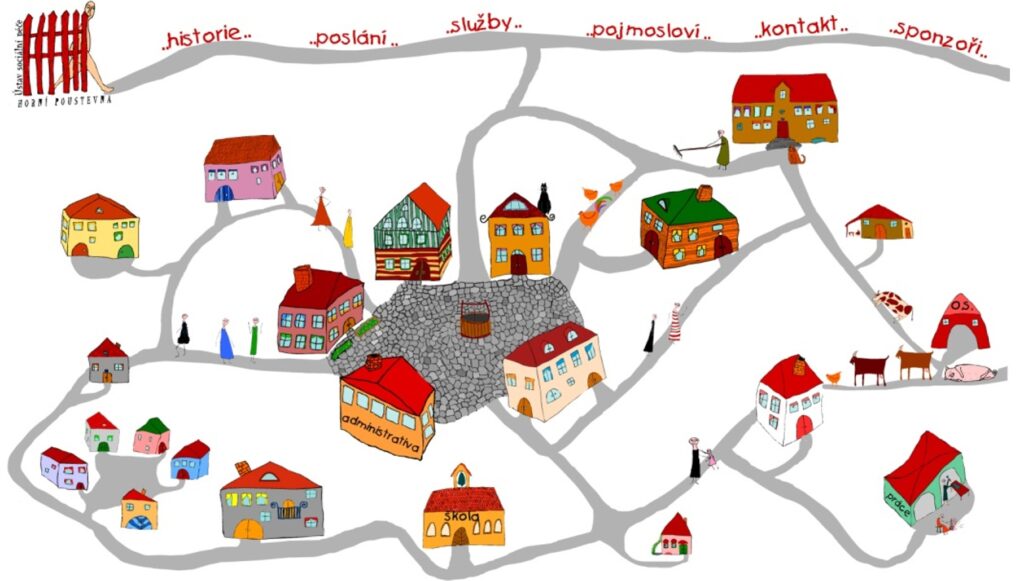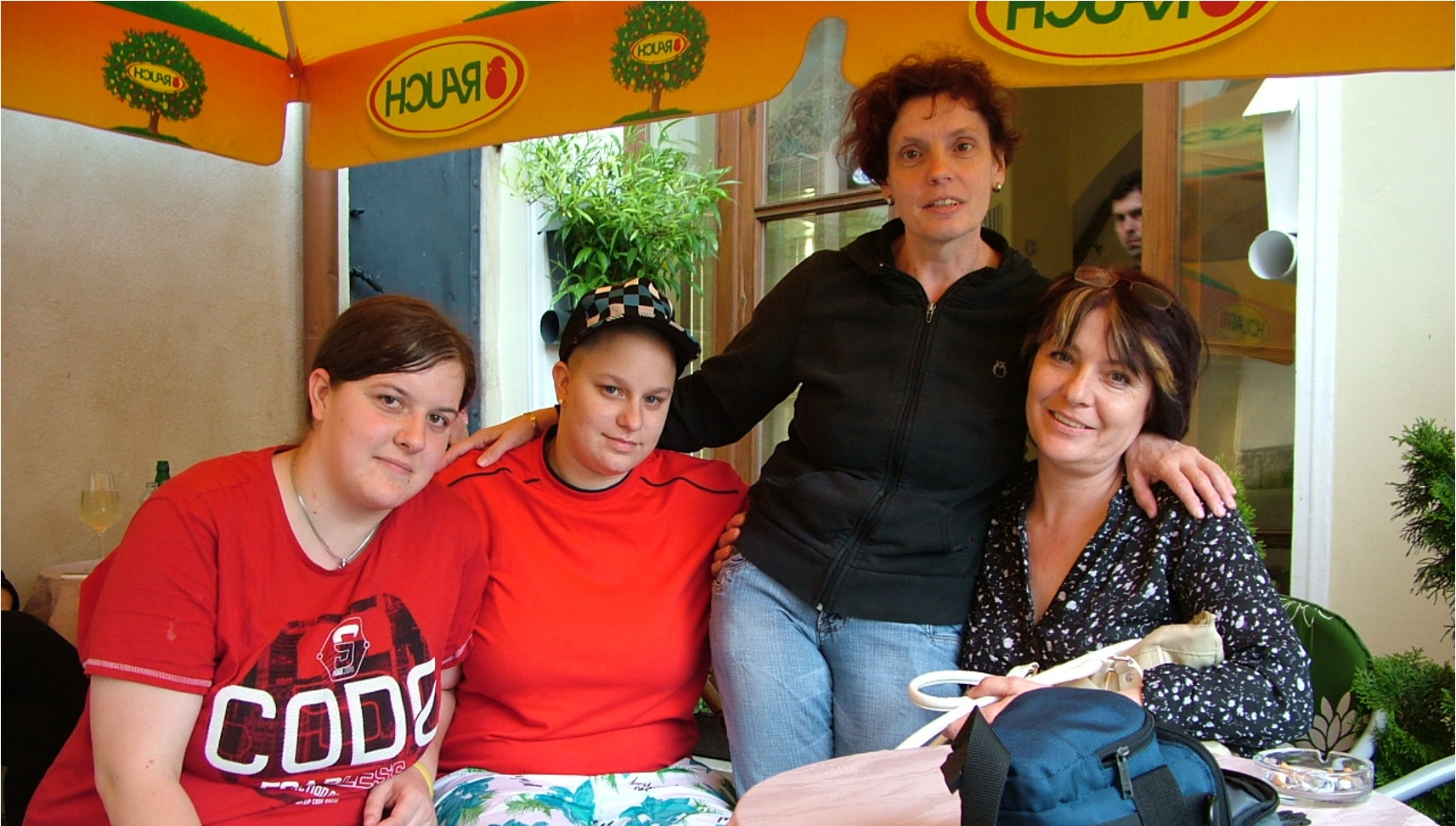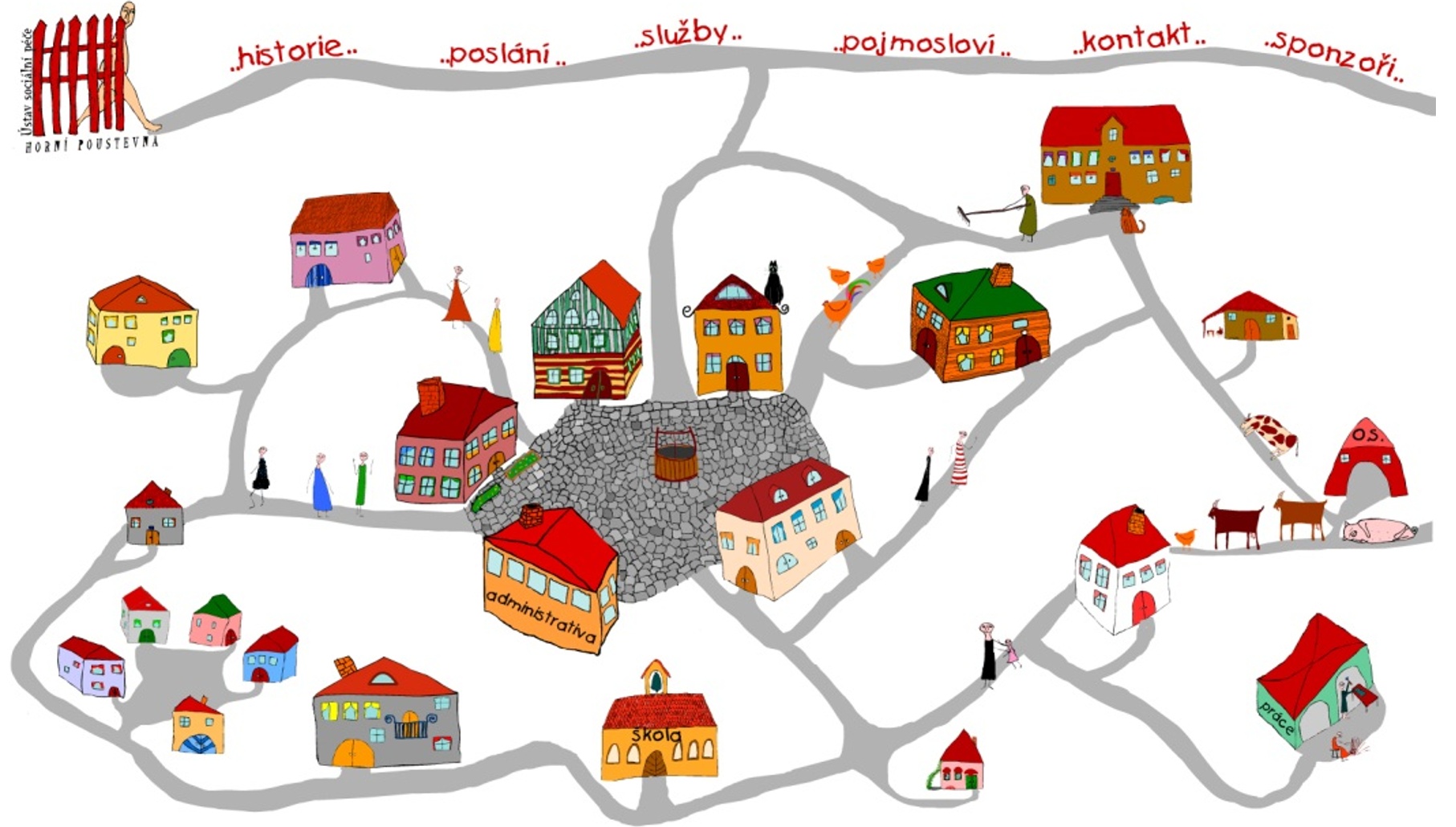The Czech Republic has more than 30 years of experience with deinstitutionalisation, i.e. the transition from institutional care to community-based services. Unfortunately, there is no single national strategy, and different approaches have been applied in different places under different circumstances. In this article, we will look at three basic models of deinstitutionalisation that have evolved in Czech practice – county-led transformation, changes initiated by the institutions themselves, and citizen initiatives. What are their strengths and weaknesses? And how to learn from them?
Thirty years of experience and three models
The first attempts at deinstitutionalisation were made in the Czech Republic as early as the 1990s. In practice, three basic models of transformation have gradually evolved, reflecting the degree of interest in change on the part of the public administration, institutional management and the civil sector. Each model has its advantages and limitations.
1. Transformation led from the regional level
The first model is deinstitutionalization led by the regional government, i.e. by the efforts of the region in its role as the founder of social services. The most prominent example is the Moravian-Silesian Region, where the transformation process started in 2005 with the aim of gradually transforming all 11 regional institutions. The plan foresees that by 2027 all institutions will be converted to other forms of services.
The transformation began with a pilot project at Hošťálkovy Castle, which originally had 100 beds. Clients were moved to Krnov (a city of 23,000 inhabitants), where a residential service for 60 people was created, divided into smaller units for 6 to 10 people, a residential service for 20 people in three households, and houses for 5 to 8 people.
This was the first attempt at deinstitutionalisation and some of the new services remained large – for example, a 60-bed facility cannot be considered a community service. The last institution in the region – Dolní Životice – will be transformed in 2027, with some people being moved to three smaller buildings for 18 people and one building for 12 people.
This model focuses on area transformation across the entire county. A significant proportion of new capacity remains too large for these services to fit with the principles of community care. However, it demonstrates that if the will is there at the county level, it is possible to transform large-scale social service systems, even over several electoral terms.
2. Transformation initiated by the institutes themselves
The second model is deinstitutionalisation led by the management of the institution, often without the broader support of the founder. This model usually develops where an enlightened facility director advocates for change. The process can be disrupted if the staffing of senior positions in the institution or the attitude of the founder changes.
Horní Poustevna is the first domestic attempt at change. The transformation process began here in the first half of the 1990s and lasted until 2003, when it was interrupted by the death of the director who promoted it. More than one hundred (108) residents of the institution began living in a more intimate environment as a result of the transformation, in a total of 26 households in the region. Due to the lack of interest from the founder, which is the capital city of Prague, after the change of management, care returned to the institutional model in many respects.
Another example of transformation led by the Institute itself is Vyšší Hrádek (2006-2014) in the Central Bohemia Region. In this case, the director transformed a former Baroque Piarist boarding school for 100 women into 14 smaller facilities located in Čelákovice, Brandýs, Kojetice and Kostelc. A total of 21 households were created: sheltered housing for 31 people in 6 buildings and a home for people with disabilities for 58 people in 14 households in 8 buildings.
Both examples of transformation managed by the institute itself are characterised by the fact that the newly built facilities are smaller (for units, not tens of people), which creates better conditions for meeting the needs of service users. Moreover, in the case of Horní Poustevna, the premises for community services are rented, which has greatly accelerated the process.

3. Citizens’ initiatives
Where there is a lack of support from local government or institutional leadership, changes can be initiated by people outside the constitution. One of many such examples is the story of Barbara, who, after more than 40 years in an institution, received support from local volunteers. They helped her find a job, access health care, manage her finances because her public guardian was failing, and apply for a council flat.
Barbara’s legal capacity was limited, but her friends, with the help of lawyers and social workers, helped her get the court to restore her legal capacity. Thanks to the support of friends and a non-profit organization, she left the institution and has been living independently for many years, despite the predictions of various experts that she could only live in a residential social service.
While this model will not change the whole system, it provides valuable examples of best practice that can inspire further change.

What can we learn from these models?
Transforming the whole system requires strong political and managerial support. Change is possible countywide and the process can be sustained over many terms. The process of deinstitutionalisation is time-consuming if it involves the construction of new buildings, waiting for projects, building permits and the construction itself. Moreover, this approach leads to the creation of larger facilities that can hardly provide the conditions for the fulfilment of Article 19 of the Convention on the Rights of Persons with Disabilities. While individual exits from institutions only help individuals, they also show examples of how to achieve real social inclusion.
It would be ideal to combine the strengths of all three models into one model that is politically, managerially and civically supported.


